#hairwork
Explore tagged Tumblr posts
Text

A "Ships in the harbour" hairwork pendant (made of glass, hair and gold) from the late 18th century
428 notes
·
View notes
Text

Ring of human hair
Photo: Nasjonalmuseet/Frode Larsen
26 notes
·
View notes
Text

Brooch, hairwork and gold, with double bow formed of open table-braided tubes of dark and light brown hair secured at the centre with an engraved gold ribbon rosette set with a pearl; two ribbons formed of thin double cords of plaited hair entwined as lovers' knots, gold ends, attached at the back. Hair, gold. British Isles, 1850-70.
2 notes
·
View notes
Text



NOSFERATU (2024) — anna harding's burial costume, designed by linda muir
#nosferatu#nosferatu 2024#costume design#anna harding#emma corrin#linda muir#costumes#i think this is my fav costume in the whole film she looks like a medieval princess with the thin metal diadem#and the hairwork bracelet!!!!
2K notes
·
View notes
Note
wild how it’s all “victorians’ toxic wallpaper and gas leaks and prescription cocaine 😱” until it comes time for a twinkie to kill a victorian child 🙄🙄🙄
so that's not quite what I was going for
that post was inspired by another post where someone noticed a knife-sharpening van in their neighborhood (Canada, I think?) and remarked at length about how Ominous and Creepy it was
and I was just like. yes. that used to be a normal thing. I wish WE had that here still! how on earth is a basic convenience service "creepy?"
then I thought about other things people consider Weird and Spooky from the Victorian era, but that were actually normal and neutral or positive. hairwork- jewelry made from or containing human hair, often that of a loved one for sentimental reasons (sometimes, but not always, after the person's death) -and dolls came to mind
it struck me as ironic- not that the Victorian era had hazards that people seemed to forget, but that they brag about their music or food rendering Victorians catatonic when ordinary things from the 19th century have them screaming for holy water and a crucifix
#ask#anon#'hairwork is gross!!!!!' tell me more about how you're stronger than a Victorian because you drink Mountain Dew Code Red though
74 notes
·
View notes
Text






‘11 Cups of Tea With My Mother’, 2019. Teabags, human hair. Teabags from tea shared with my mom bound with my hair and her hair.
Made when I first began exploring artmaking as an archival practice and experimenting with how to archive things that felt unarchiveable.
I’ve had hot tea (black Lipton tea with 5 spoonfuls of sugar and a big splash of 2% white milk) in the mornings with my mother for as long as I can remember, and the act of preparing and drinking it is somewhat of a ritual for me now that brings me closer to her whether she’s around or not. I saved and dried the teabags we used for a short period of time and and bound them into a book using strands of our hair to bind it, recalling Victorian practices of hairwork. Hair is very strong and doesn’t degrade very quickly (hair is still found on bodies long after passing), making it great for archival purposes. It having the DNA of its owner makes it even more personal and powerful.
In witchcraft, hair is often used as a taglock to bind a magical working to the person it is directed at, making this piece a protection and longevity spell for my mother and I.
#my Art#contemporary sculpture#book art#Victorian hairwork#Victorian hair art#contemporary art#bookbinding#female artists
3 notes
·
View notes
Text

A gold lock for 3-row necklace depicting a ship, made of hair and black ink. Produced for Hoorn/Enkhuizen, Netherlands, late 19th century or early 20th century
#naval art#naval jewellery#hairwork#necklace lock#late 19th century#early 20th century#age of steam#art
80 notes
·
View notes
Text

Necklace of hair
Light brown hair woven into a spiral patterned necklace. Likely made in the 1830s or 40s
Photo by Freia Beer in the Nordenfjeldske Kunstindustrimuseum
25 notes
·
View notes
Text
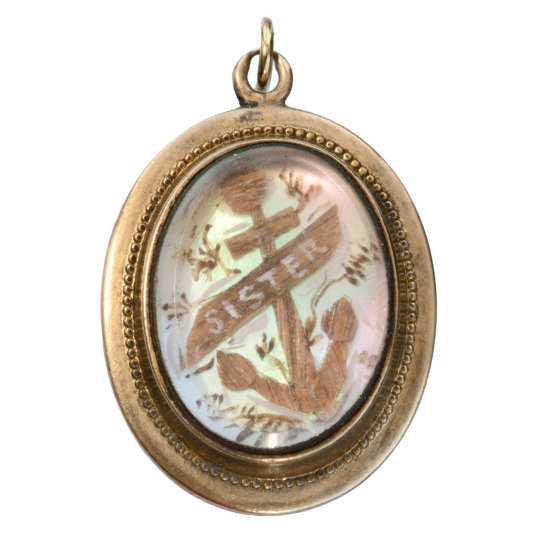
A rare c1880 Victorian mourning pendant with delicate hairwork over abalone shell. The front has an anchor with the work "sister" and the back the letter "M" surrounded by flowers. A gold filled case.
eriebasin.com
174 notes
·
View notes
Note
The teeth are probably "milk tooth jewelry," made with children's baby teeth as a keepsake. like hairwork, it COULD have mourning connotations, but it didn't ALWAYS. and good gods, OOP is a pill. yikes. keep fighting the good fight, OMGTD!
(although I'm not sure I totally agree with the assessment that mourning unilaterally sucked- it COULD definitely be a financial and social burden on people, but you also see plenty of etiquette manuals- which we all know are infamous for trending towards unrealistic propriety -reminding readers that mourning is personal and intended to prevent unintended rudeness to or demands upon a bereaved person. many outright oppose putting small children in mourning clothes, for example, since they're too young to understand what happened. the were spans involved were also rather shaky; I found only a few primary sources for the infamous "widows mourn for a year and widowers for six months" statistic, and more opining that the death of a spouse meant a year's mourning regardless of gender. there were also garments that could be suitable for both mourning and non-mourning purposes, even the earlier stages if shiny or contrast-color trim could be removed, thus saving a family money)
(I have historian friends who've lost loved ones and say they wish there were some codified way to show their bereavement nowadays, so people would know to be gentle with them. which was the intent- though not always the extent -of Victorian mourning practices)
(but it's not either/or across the board, of course! a cultural practice can be good for some and less so for others! I'm sure being at the social mercy of some strict doyenne could make mourning a burden rather than a genuine expression of grief- it depended upon the understanding of the people around you)
yeah, all of this is true!
But the pieces in the post were all like really obvious modern pieces with modern design and adult teeth so yeah those aren't actual Victorian pieces.
52 notes
·
View notes
Note
You said something in sometime before that gods can change due to the beliefs in them yeah? That got me wondering if Twilight would become the God of information/knowledge as well as friendship with the whole twi-net thing, because there's bound to be a shitton of information shared there and it'd just. Get correlated to her even if it's by the ponies/others that use her hair?
The information on her hairwork is actually from other ponies writing and adding it, though there is plenty of her own contribution. I suppose she does get correlated with information and knowledge... But just like the real internet, it's not the internet that provides this; it's connection.
She is the goddess of connection, for better or for worse; and all the possibilities that comes with it.
107 notes
·
View notes
Text












Victorian Hair Art
As written in the article:
"Although hair art is frequently associated with memento moris, or objects of mourning, it was just as often used to make family trees or tokens of friendship."
“A lot of hair would be braided and then placed in a book and a poem would be written underneath it, or something describing their relationship with a person,” Snedden Yates said. “It was really an ode to the person's essence.”
Photos from top to bottom, left to right: 1.Victorian hair art Case containing hair arranged for inclusion in articles of jewellery. Increasingly, commercially available hair was used in jewellery. Such items were general symbols of mourning rather than specific souvenirs of a loved one. funerary objects National Museum of Scotland Edinburgh, Midlothian, Scotland, UK.
2. From blog post: "Callie, 25 years old...born May 3, 1872. This also has Callies baby hair." & 9. All 9 pages of the book "There are nine pages in this amazing book. These pages were at one time tied together, but the "ties" or ribbons are gone. The family represented in these pages was from the Nora Springs, Iowa area, and the dates are from 1887-1897."
3. 1875 French mourning framed captains hair art, found on Pinterest, the original post is from eBay but can't be accessed.
4. I found this image on Pinterest but unfortunately couldn't find any more information.
5. "Victorian Hair Mourning Wreath." I found this image on Pinterest, there is a link but the connection is dodgy
6. "Antique mourning hair art." I've added the Pinterest link below, but again the the blogspot link is dodgy.
7. "Fabulous 19th Century Hair Album page 2" I couldn't find any additional information on this page. It seems to be from a mourning book due to the cross and "the lord is risen". The flowers and ribbons make this one seem like it must have been very special and personal to the owner.
8. A link took me to this site "artofmourning.com" But there's no point putting that here because the page appears to have been deleted.
9. ^ linked with no 2. 10. "American Love Token with Hair and Watercolor Decoration c. 1840"
11. "Mourning Hairwork Designs in honour of "Day of the Dead"
12."1800s mourning hair art frame with picture Victorian hair memento mori" From a sold Etsy listing
5 notes
·
View notes
Text
"hot cheetos would kill a Victorian child!" my guy you think hairwork jewelry is gross and all dolls made before the 1990s are possessed by Satan
you have no room to talk
#yes this inspired by that knife-sharpening van post#oh noooo a useful service is being provided in my neighborhood! so creeeeeepy!!!#history#victorian
592 notes
·
View notes
Text
i finally found a book from the 1700s about garden design and the uses of plants that seems to work, and one thing i find interesting about it that i also noticed in a different historical instructional book about hairwork jewelry from the victorian era is that like, there will be ads. in the book? like the author will write their instructions and then add "AND BTW YOU CAN HIT ME UP FOR MY SERVICES IN THIS DEPARTMENT. AT MY COOL BUSINESS. I AM OPEN FOR CONSULTATION." i feel like you dont see this as much in modern instructional texts
7 notes
·
View notes
Text
Victorian keepsake: Skiff family hair album, ca. 1845
youtube
In this video, Manuscripts and Archives Librarian Catherine Grandgeorge combs through a family hair book from the Newberry's Midwest Manuscript collections. View the Skiff family hair album at Newberry Digital Collections
About Victorian hairwork
"As strange as it might seem today, Victorians often used human hair from friends and family to create wreaths and jewelry, commonly referred to as ‘hairwork.’ Victorian hair albums are a rarer phenomenon than other types of hairwork and are also a culturally different phenomenon. Hair wreaths and hair jewelry were often created as an act of mourning and generally the hair was removed from the deceased prior to burial. The jewelry served as a way to keep your loved one near you as you went on with your daily life, and was also a socially acceptable fashion accessory during the official mourning period. Hair wreaths were another mourning artifact and were fashioned in the shape of a horseshoe with the open end upwards to signify ascent into heaven.”

Stella Skiff Jannotta scrapbooks, 1801-1996
"Hair albums, on the other hand, were often assembled using locks of hair from living friends and family and more closely relate to the concept of an album amicorum or friendship album. Friends exchanged locks of hair as a token of affection or sometimes remembrance if a friend was moving far away and it was unlikely that they would ever see each other again. The locks of hair were styled according to the abilities of the album creator, ranging from simple bunches tied together with string or ribbon to elaborate braided and looped creations. Asking one’s friends for a lock of hair seems almost unimaginable now, but in a time before the invention of photography, a piece of hair was the only tangible way to remember someone."
-- "Hair Today and (Not) Gone Tomorrow: The Conservation of a 19th-Century Hair Album," by Mary H. French
About Stella Skiff Jannotta
An American suffragist, eugenicist, genealogist, writer, and member of the founding family of Jewel Tea Company, Stella Skiff was born on October 29, 1867, in Newton, Iowa. After establishing a successful dry goods business in Newton, the Skiff family moved to Chicago in 1889. Stella studied music at the Chicago Conservatory with Italian maestro Alfredo Antonio Jannotta, an Italian composer, conductor, and voice instructor, and was considered a promising lyric soprano. Stella and Alfredo were married in 1893 and took residence at the Plaza Hotel in downtown Chicago before settling in Oak Park.

In the early 1900s Stella became active in the women's suffrage movement and in rationalist religious organizations. She joined the Chicago Political Equality League (CPEL), the precursor to the Chicago League of Women Voters, and wrote several essays on eugenics and the related issues of birth control, overpopulation, prostitution, sex education, and spouse-choosing. Stella also spent a considerable amount of time researching her family history. Stella died in 1954. More information: Stella Skiff Jannotta scrapbooks collection guide
28 notes
·
View notes
Note
Grisha wedding/family stuff I thought up because the soldier thing makes me weepy
Some grisha will exchange teeth or other bones. These are people who wear animal bones for God's sake.
Dead soldiers demanding their comrade take off a finger and give the bones to their widowed spouse, siblings exchanging baby teeth on a string around their wrist. Hell maybe the string is woven out of their hair. I know Chinese people make calligraphy brushes out of their baby's first haircut maybe they wove it from parents' and baby's hair. Alongside pictures in lockets they have hair or teeth.
These all have historical basis, hairwork jewelry, mourning jewelry with hair in them, and queen Victoria made jewelry out of her kid's teeth.
I guess cutting their palms and joining their blood together is really hardcore because of the fear of hand injuries.
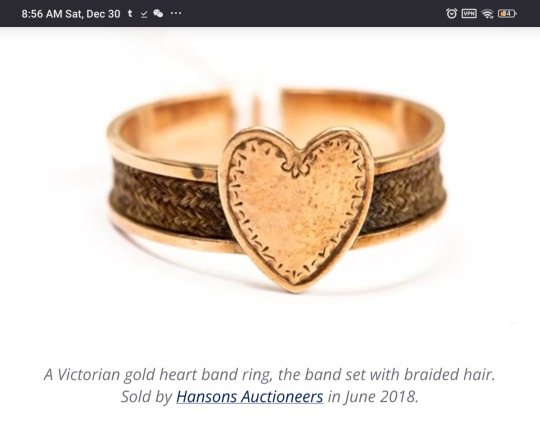
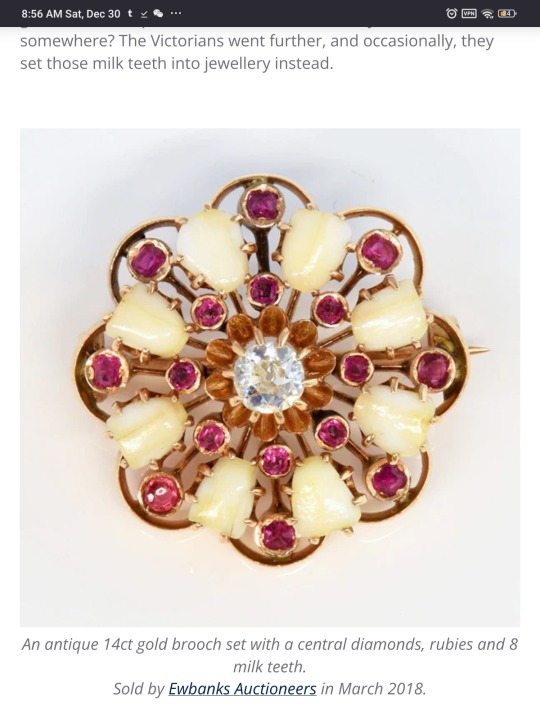
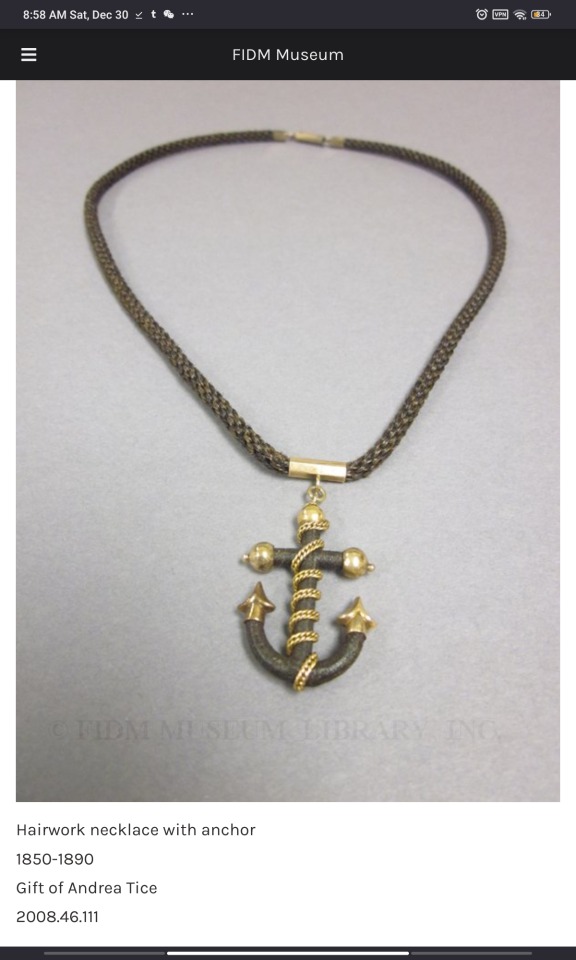
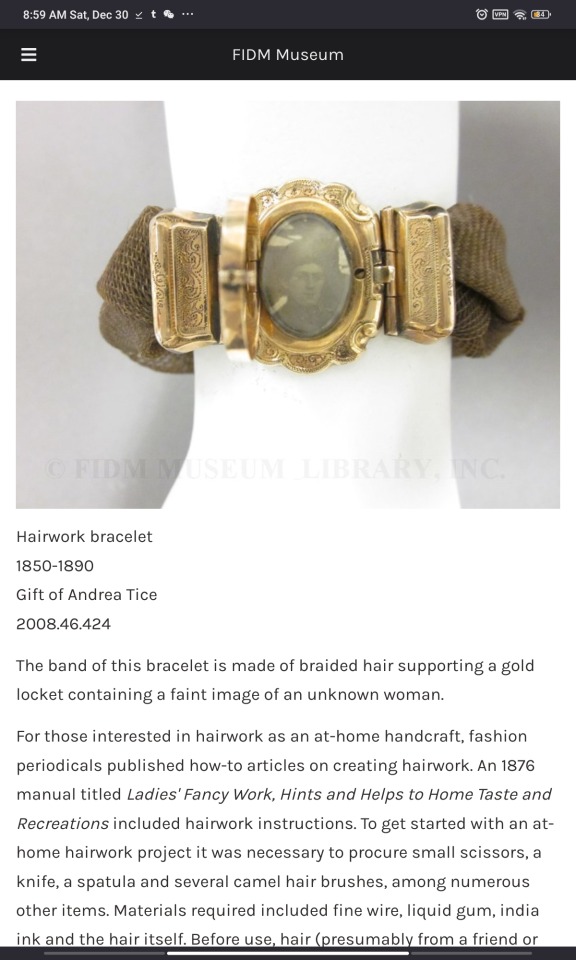
Let Grisha be weird and have strange traditions because persecuted minorities should not have to be perfect to be accepted by mainstream society.
I was saving this ask for later, because I absolutely adore the idea, and I was hoping to come up with more, but I guess I can come back to it in reblogs...
This is exactly my kind of thing- I've been collecting animal bones as a child, burial rites are among my favourite topics and while I hope grandma will stay with us for a long time, I'm looking forward to throwing her around our garden (She insists on cremation and dispersion.).
If Victorians could make jewellery from body parts, why couldn't Grisha? The time setting fits and people used to be less oversensitive about such things.
One of my favourite quotes from Hannibal claims human bones used to be among first materials used for fabrication of musical instruments. Mental image of deceased mother, "singing" to her children this way long after her death keeps haunting me ever since.
Since Grisha apparently aren't limited by strangeness of objects they want to fuse with their own bodies, another thing came to my mind- American Mary has a scene, where the MC transplants an arm from one twin to another and vice versa. Not only I can see this applied to close siblings- kebben anyone?- but why exchange ordinary rings in marriage, when you have a way to fuse in other creature's bodyparts? If Judeo-Christian God created woman from man's rib, why would Grisha need twelve pairs?
note: I need the milk teeth brooch like yesterday! And I don't like gold, so that says something.
#reply#Grishaverse#Shadow and Bone#grishanalyticritical#Grisha#kebben#jewellery#Hannbal (TV series)#American Mary#What if/AU/...
16 notes
·
View notes
